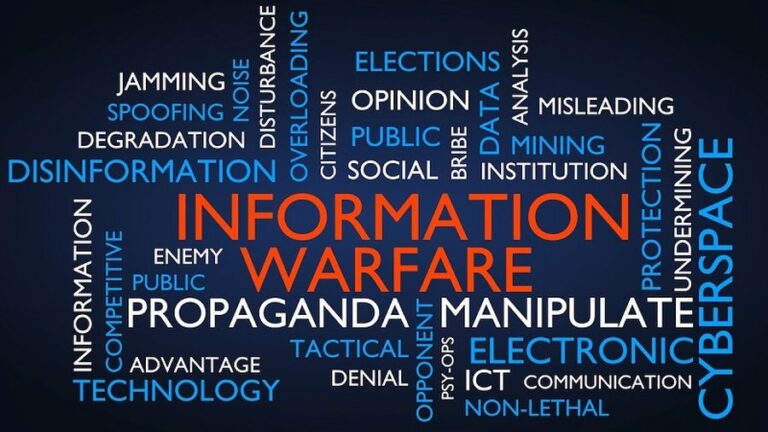On the Virtual Meeting between the US and China
One of the major events of current world politics was the November 16 virtual meeting of the two leading world powers, the USA and China. It lasted three and a half hours and went beyond the scheduled time.
This fact along with the content of the issues discussed and the parties’ positions on them as outlined by the White House served as a basis for the Chinese Global Times to assess the outcome of the meeting as “relatively positive.”
The same fact makes the author question the validity of the widespread opinion about the high level of the negative influence of inevitable age deformations on the incumbent US President’s capacity. Some external manifestations of said deformations may even be used for risky probing of opponents’ reactions to specific planned steps in Washington’s foreign policy.
The first general impression of the author regarding the results of the meeting is that the positions of the parties on the critical issues of bilateral relations and the situation in the world as a whole remain approximately the same as they have been in recent years. Which, these days, isn’t bad.
In other words, the “relatively positive” outcome mentioned above is more about the fact that during the meeting, no new serious problems in bilateral relations emerged, nor were the existing ones aggravated. As always, everything will be determined by the further concrete actions of the parties, not by words, whether written down on official papers or spoken out in public. Although, of course, the significance of words cannot be discarded entirely either.
The word “guardrails,” as used in the above-mentioned document, has gained everyone’s attention. This term seems to refer to such activities and behavior of the two leading world powers, which would prevent something quite catastrophic in some unforeseen accident in the ongoing global competition between the USA and China. The same Global Times has figuratively shown what the parties mean by the word “guardrails.”
But the day after the video meeting under discussion, it was announced that joint US-Japanese naval drills (remarkably, with the latter’s predominance) had taken place (without designation of a date) in the South China Sea under the anti-submarine defense scenario. So, are these drills beyond the guardrails or not?
The area of the drills is shown as a blurry spot on a picture, which cannot be considered a geographical map. Although it is located far from the Chinese island of Hainan (present in the same picture without the name next to the word South), it is somewhere near the Spratly Islands claimed by China and,
suspiciously, absent from the picture altogether. The explanatory text merely refers to China’s creation of artificial islands and turning them into military bases, which is the case in some of the Spratly Islands. Note that the USA and Japan don’t recognize the ownership of this archipelago by China, at least all of its islands, referring to the well-known decision of the summer of 2016 Permanent Court of Arbitration in the Hague, a decision not recognized by China.
But it is exactly this decision that Washington has been implying when talking for the past few years about ensuring freedom of navigation throughout the Indo-Pacific region, including the South China Sea. The American president also used this well-established mantra in his meeting with the Chinese leader.
That is to say, from the point of view of Joe Biden, these “guardrails” were not crossed during the drills. An assessment Xi Jinping is unlikely to agree with.
In addition, Japan, a key US ally, is increasingly making a definite statement about its military and political presence throughout the Indo-Pacific region and in the South China Sea in particular. In particular, Admiral Hiroshi Yamamura, Chief of Staff of the Japanese Maritime Self Defense Force, paid specific attention to the very fact of the aforementioned drills. As for Tokyo’s intention to maintain certain “guardrails” in its relations with Beijing, so far, nothing definite has been heard from it.
However, there are reports of preparations to hold a 2-plus-2 video meeting shortly between the Foreign Ministers and Defense Ministers of Japan and the Philippines. The aforementioned drills were conducted off the coast of the latter country. Japan’s new Prime Minister, Fumio Kishida, and the outgoing Philippines President Rodrigo Duterte agreed about it by phone. The Mainichi Shimbun commentary on this report mentions the fact of China’s growing maritime assertiveness in the region.
One of the main topics of the Xi Jinping – Joe Biden video meeting was related to the situation surrounding Taiwan. This topic has recently served as a major irritant in bilateral relations. Judging by the document’s text mentioned initially, the American president did not go beyond the official US position on the Taiwan problem during his conversation with his Chinese counterpart. This time, there were no words about “US commitments to protect Taiwan,” which recently made associates to Joe Biden and Secretary of State Antony Blinken make the necessary clarifications.
A heated debate on both sides of the Taiwan Strait erupted over the words on Taiwan independence uttered by Joe Biden in response to a journalist’s question about his position on the issue during a conversation he had just had with the Chinese leader. Soon, however, Joe Biden explained that his administration would not change the established official US attitude toward the Taiwan issue. Nevertheless, from Taipei, came words of gratitude for the fact that Joe Biden allegedly advocated maintaining the status quo in the Taiwan Strait.
Once again, as with the “guardrails,” this is not about the words of the current US president but specific recent US policy actions regarding the Taiwan issue. And their general vector is increasingly clearly aimed at making it as difficult as possible for Beijing to solve the problem in the format it needs.
The most recent evidence of this was the visit to Taiwan by six Republican congressmen led by Senator John Cornyn. The visit was the final stage of the group’s Indo Pacific region tour, including India and the Philippines. It ended up in Taiwan just before the Xi Jinping – Joe Biden video meeting. The stated purpose of the entire tour was to strengthen ties with critical allies and partners to counter Chinese aggression.
The economic sphere of bilateral relations, which serves today as one of the main factors “to keep them afloat,” received only a brief note in the mentioned document of the White House. Specifically, Joe Biden was quoted as stating “the need to protect American workers and industry from China’s unfair trade and economic practices.”
In general, this phrase accurately enough reflects the current administration’s general wariness about the prospect of removing the obstacles that have been erected in recent years to the further development of USA-China trade and economic relations. Although the latter are already at a high level. Consider, for example, the volume of bilateral trade totaling $615 billion last year, a year plagued by the coronavirus, with a US deficit of $285 billion, which is already markedly lower than the previous peak figures of under $400 billion annually. Activities under the Phase One Agreement concluded in January 2020 with China by the previous administration are already manifesting positively for the USA.
Nevertheless, lawmaking aimed precisely at combating the unfair practices mentioned by Joe Biden, continues. At the same time, as Treasury Secretary Janet Yellen mentioned, some of the punitive tariffs on Chinese goods adopted earlier by the Trump Administration should be reviewed.
In general, the business circles of both countries were optimistic about the very fact of the Xi Jinping – Joe Biden video meeting.
Finally, it cannot be ruled out that it was an act of the game Washington plays with its two now main geopolitical opponents, China and Russia, with periodic changes of the object of increased pressure, so that one of them would be the first to make essential concessions from Washington’s point of view, which may raise suspicions about its reliability in a strategic Russian-Chinese back-to-back configuration.







